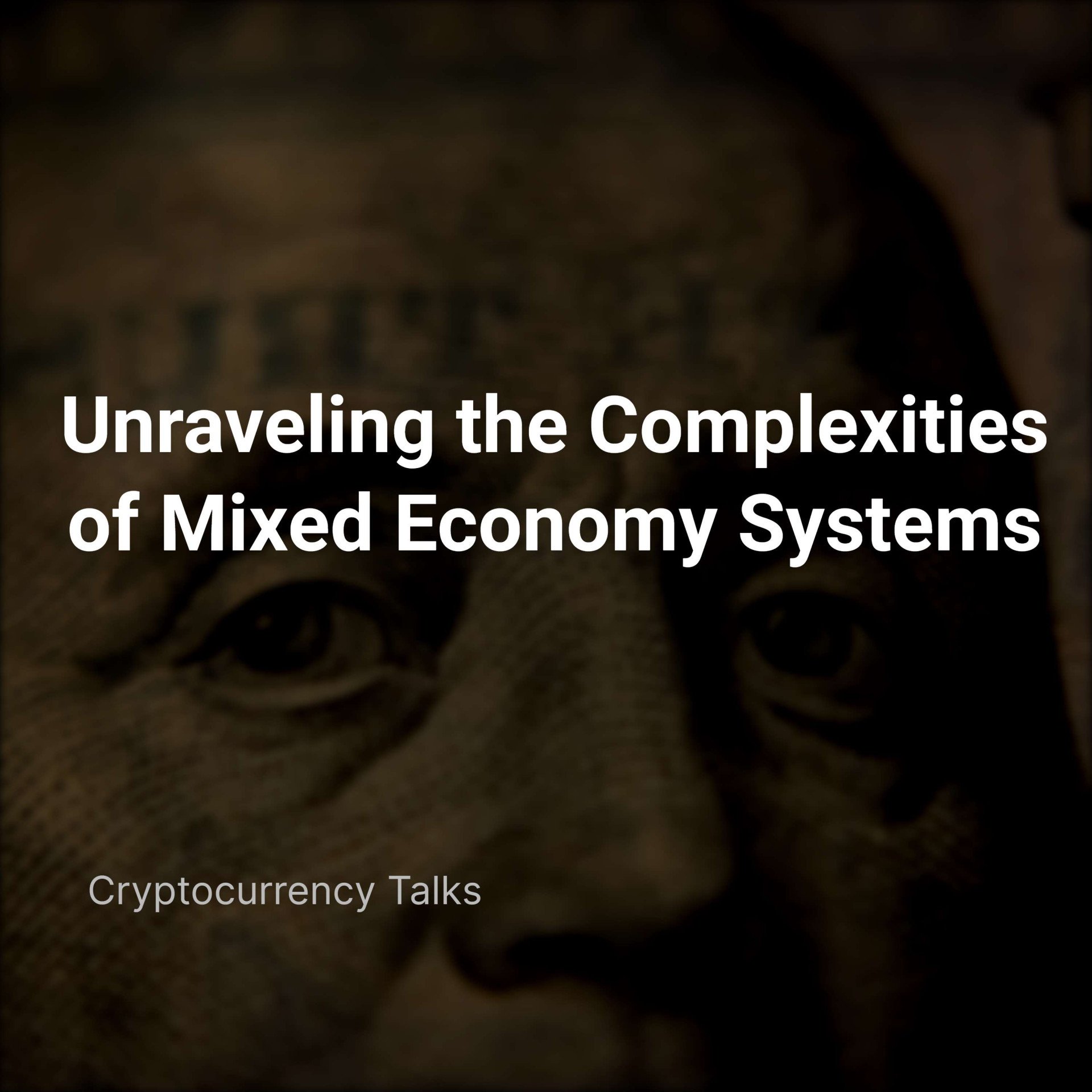Unraveling the complexities of mixed economy systems offers valuable insights into the key characteristics, the role of government, and the advantages and disadvantages associated with this economic model. Understanding what is a mixed economy is essential for comprehending the dynamic interplay between market forces and government interventions. In this blog post, we will delve into the intricate workings of mixed economy systems and explore how they shape modern economies.
Key Characteristics of Mixed Economy Systems
A mixed economy combines elements of both free-market and command economies, allowing for private enterprise and government intervention. Here are some key characteristics to understand what is a mixed economy:
Blend of Private and Public Enterprises: In a mixed economy, both private companies and state-owned enterprises coexist.
Resource Allocation: Resources are allocated through a combination of market forces and government planning.
Economic Freedom: Individuals have the freedom to start their own businesses and make economic choices.
Government Intervention: The government regulates certain industries, provides public services, and implements policies to address market failures.
Income Distribution: Mixed economies often strive for a balance between wealth accumulation and social welfare.
Understanding these key characteristics sheds light on what is a mixed economy and its unique blend of economic ideologies.
The Role of Government in a Mixed Economy
In a mixed economy, the government plays a crucial role in balancing the interests of the private sector and the welfare of the citizens. Here’s how the government influences and regulates the economy:
Regulation and Control: The government enacts laws and regulations to oversee private businesses, ensure fair competition, and protect consumer rights.
Public Services: It provides essential public services such as healthcare, education, and infrastructure to meet the needs of the people.
Redistribution of Wealth: Through taxation and welfare programs, the government aims to reduce inequality by redistributing wealth and providing assistance to the less fortunate.
Stimulating Economic Growth: Governments may intervene to stimulate economic growth through fiscal policies, investment in key industries, and infrastructure development.
In a mixed economy, the government’s involvement aims to maintain a balance between free market dynamics and societal welfare.
Remember, governments have a broad influence in mixed economies, impacting various sectors and aspects of people’s lives. Their role is pivotal in shaping the economic landscape and ensuring fairness and stability.
By taking a closer look at the role of the government in mixed economies, we can gain a deeper understanding of what is a mixed economy and how it functions in the modern world.
Advantages and Disadvantages of Mixed Economy Systems
A mixed economy system has both its advantages and disadvantages, offering a balance between government intervention and free market principles.
Advantages:
- Diversity: A mixed economy allows for a variety of goods and services, fostering innovation and economic growth.
- Social Welfare: Government intervention provides social safety nets, ensuring basic needs are met for the population.
- Economic Stability: Regulations and policies help prevent extreme market fluctuations, promoting stability.
Disadvantages:
- Inefficiency: Government intervention can lead to bureaucracy and inefficiency, hindering economic growth.
- Lack of Full Control: The mix of private and government control can lead to conflicting interests and challenges in decision-making.
- Inequality: Despite social welfare measures, income inequality may persist, impacting societal equity.
Balancing these advantages and disadvantages is essential in understanding the dynamic nature and impact of a mixed economy.
Remember, what is a mixed economy may vary in different countries, each with its unique blend of advantages and disadvantages.
Frequently Asked Questions
What is a mixed economy system?
A mixed economy system is an economic system that features elements of both market and planned economies. It combines the advantages of both systems, allowing the government to play a role in economic planning while also enabling private enterprise and individual initiative to thrive. In a mixed economy, there is a blend of public and private ownership, and the government intervenes in certain areas to address market failures and promote social welfare.
What are the advantages of a mixed economy system?
One advantage of a mixed economy system is that it provides a balance between individual freedom and government control. It allows for economic competition and innovation while also ensuring that essential public services are provided. Additionally, a mixed economy can adapt to changing circumstances and address market failures more effectively than a purely market-driven system. It also enables the government to address inequality and poverty by implementing social welfare programs.
Are there any drawbacks to a mixed economy system?
One drawback of a mixed economy system is the potential for government intervention to lead to inefficiencies and bureaucracy. Balancing the interests of private businesses and public welfare can also be challenging, leading to conflicts and policy complexities. Additionally, there is a risk of government favoritism, where certain businesses or industries receive preferential treatment, leading to unfair competition. Despite these drawbacks, a well-regulated mixed economy can effectively address market failures and promote economic stability.





























































































![BitTorrent [New]](https://s2.coinmarketcap.com/static/img/coins/64x64/16086.png)















